Day 2 — Thursday, Nov. 21
All times are Eastern Standard Time. 5.81 CRCE available.
Display Preferences
Hide/Show
8:00 a.m.–8:30 a.m. | Room 240B | General
Ambulatory and Post-Acute Care Section Meeting
Timothy Buckley, MSc, RRT, FAARC
Show description
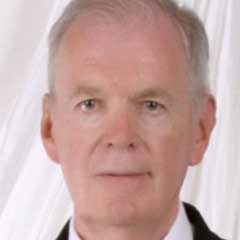
Section members meet to determine their needs and priorities, as well as how to use AARC resources to accomplish them. All Congress attendees, including section nonmembers, are invited to attend and participate.
8:30 a.m.–9:05 a.m. | Ballroom WF4 | Adult Acute Care
Enhancing Communication with Intubated Patients: Strategies and Innovations
Stephan Ehrmann, MD, PhD
Show description
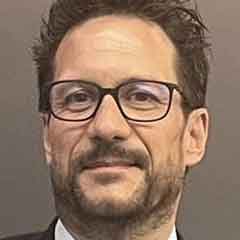
This lecture highlights the significance of effective communication between caregivers and patients in the ICU, especially when facing the challenge of communicating with intubated patients. The traditional tools like whiteboards and pen-and-paper are inadequate for overcoming the communication barriers caused by the endotracheal tube limiting patient vocalization. The presenter will explore the importance of this communication and introduce advanced solutions, including eye-tracking and speech-generating technology. The session will provide evidence on how these technologies have greatly enhanced communication with intubated patients.
8:30 a.m.–2:05 p.m.
Symposium
Year in Review
8:30 a.m.–9:05 a.m. | Ballroom WF3 | Adult Acute Care
Fugitive Aerosols — Keeping the Air Clean for Patients and Staff
Michael Davis, PhD, RRT, FAARC
Show description
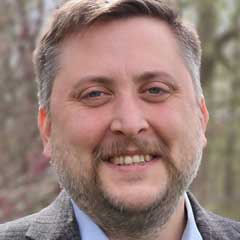
Since the beginning of the COVID-19 pandemic, significant concerns arose regarding the generation and dispersion of aerosols that could potentially contain and spread this disease and others. These concerns altered respiratory care practice throughout the world. Many studies have been conducted evaluating the generation and spread of these "fugitive aerosols." This presentation will discuss the evidence of fugitive aerosol generation and dispersion during a variety of respiratory care procedures.
9:15 a.m.–9:50 a.m. | Ballroom WF3 | Adult Acute Care
Ventilator Associated Pneumonia
Brian Ring, PhD, MSc, RRT, RRT-ACCS, RRT-NPS
Show description

Ventilator associated pneumonia is a common and costly complication of intubation and mechanical ventilation. This presentation will review the important papers related to ventilator associated pneumonia over the last year.
10:00 a.m.–10:35 a.m. | Ballroom WF3 | Neonatal/Pediatrics
Pediatric Mechanical Ventilation
Alex Rotta, MD
Show description

This presentation will review the important research in pediatric mechanical ventilation published in the last calendar year.
12:45 p.m.–1:20 p.m. | Ballroom WF3 | Diagnostics
Pulmonary Function Testing
Jeffrey Haynes, RRT, RPFT, FAARC
Show description
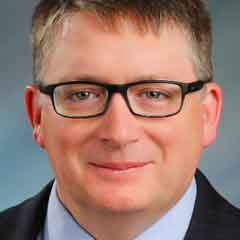
Pulmonary function testing is an important diagnostic tool for identifying and grading pulmonary disease. Many new techniques have been introduced and recent changes in race-based equations are important updates. This presentation will review the important papers published in the last calendar year.
1:30 p.m.–2:05 p.m. | Ballroom WF3 | Adult Acute Care
Inhaled Pulmonary Vasodilators
Christopher Piccuito, MSEd, RRT, RRT-NPS, RRT-ACCS
Show description

The presentation will review the important papers on inhaled pulmonary vasodilators over the last calendar year.
8:30 a.m.–10:35 a.m.
Symposium
Simulation Symposium
8:30 a.m.–9:05 a.m. | Room 224A | Education
The Use of Virtual Reality (VR) Simulation in Clinical Practice
Jessica Schweller, MS, APRN-CNP, RRT-SDS, CCSH, AE-C
Show description

Being able to simulate real world experiences for students has provided realistic case presentations for students to practice. This lecture highlights the use of VR in an advanced assessment course for APRT students allowing them opportunities to view realistic patient scenarios for practice. The use of VR in clinical practice can enhance the simulation experience for students in all levels of practice.
9:15 a.m.–9:50 a.m. | Room 224A | Education
Designing and Implementing a Simulation Based Orientation Course
Sherry Babic, BSRC, RRT
Show description

Simulation based orientation offers an opportunity to combine initial competency assessment, improve multidisciplinary communication, and teach new skills while also improving productivity. This presentation will discuss the steps for successfully designing and implementing a simulation-based orientation course, along with special considerations that may be encountered.
10:00 a.m.–10:35 a.m. | Room 224A | Education
Live. Die. Repeat. A Different Approach to Simulation
Stephanie Holst, MS, RRT
Show description

Live. Die. Repeat (LDR) is a unique simulation format that incorporates elements of game play such as time loops, multiple players, and progressive difficulty. LDR simulation-based education allows for deliberate practice, repetition, and has emerging evidence for its novel and fun approach. This presentation will describe the LDR format and how it promotes better retention of knowledge, technical skills, and teamwork.
8:30 a.m.–9:05 a.m. | Room 224C | Leadership & Management
The RT Role in Population Health
Patty Resnik, MJ, MBA, RRT, RRT-NPS, FACHE, CPHQ, CHC, CHPC
Show description

In this lecture attendees will explore the pivotal role respiratory therapists (RTs) play in advancing public health initiatives. Through a comprehensive overview, participants will gain insights into how RTs contribute to the management of chronic respiratory conditions, preventive care strategies, and community health education programs. By examining the intersection of respiratory care and population health, this lecture aims to empower RTs with the knowledge and skills needed to enhance healthcare outcomes on a broader scale.
8:30 a.m.–10:35 a.m.
Symposium
Pulmonary Rehabilitation: Preparing for the Future
8:30 a.m.–9:05 a.m. | Room 240B | Ambulatory & Post-Acute Care
Novel Strategy for Increasing Access to Pulmonary Rehabilitation
Dave Burnett, PhD, RRT
Show description
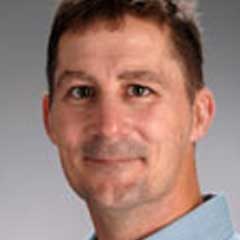
Pulmonary Rehabilitation (PR) improves the lives of people with chronic respiratory diseases; however, access to PR is poor. Clinical practice guidelines suggest that novel PR program should be developed to improve access to care. This lecture will explain a novel strategy for delivering evidence-based PR while improving access to care for people with chronic respiratory diseases.
9:15 a.m.–9:50 a.m. | Room 240B | Ambulatory & Post-Acute Care
Virtual Pulmonary Rehab-Where Are We Going and What Are We Doing?
Debra Koehl, MS, RRT, RRT-NPS, AE-C, FAARC
Show description
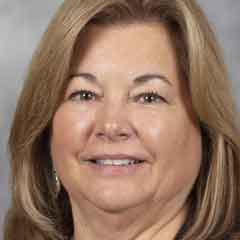
Virtual pulmonary rehabilitation came into greater focus during the COVID-19 pandemic. Medicare was happy to pay for it, but that funding went away, and there is still hope for it to return. The presenter found that virtual PR could be beneficial to many patients. This lecture will discuss the application of virtual PR and how it can fit into our PR programs.
10:00 a.m.–10:35 a.m. | Room 240B | Ambulatory & Post-Acute Care
Managing a Pulmonary Rehabilitation (PR) Program
Debra Koehl MS, RRT, RRT-NPS, AE-C, FAARC
Show description

Managing a PR program involves unique skills. Knowledge of how to deliver a program, including hiring staff, educating staff, billing and coding, and finance are essential skills. This session will delve into these various aspects of the knowledge, skills, and attributes necessary to conduct a successful PR program.
8:30 a.m.–10:25 a.m. | Room 230A | Clinical Practice
Open Forum #4 — Pulmonary Disease Part 2
Show description
Researchers present the results of their work. Authors briefly present their findings and engage in an open discussion with the attendees.
Supported by an unrestricted educational grant from
8:30 a.m.–10:25 a.m. | Room 230C | Neonatal/Pediatrics
Open Forum #5 — Neonatal/Pediatrics Part 1
Show description
Researchers present the results of their work. Authors briefly present their findings and engage in an open discussion with the attendees.
Supported by an unrestricted educational grant from
9:15 a.m.–9:50 a.m. | Ballroom WF4 | Adult Acute Care
Optimizing Flow Settings During High-Flow Nasal Cannula Oxygen (HFNC) Therapy
Jie Li, PhD, RRT, RRT-ACCS, RRT-NPS, FAARC, FCCM
Show description

The use of HFNC oxygen therapy is widespread among critically ill adults and children, yet the determination of optimal flow settings and their adjustments lacks consensus, leading to significant variations in clinical practices. Over the last two years, the presenter has spearheaded expert teams to review and analyze literature on the effects of flow settings during HFNC therapy for both adults and children. This lecture will examine the evidence on the impact of flow settings in HFNC therapy across these demographics and propose a potential method for identifying optimal flow settings based on existing research.
9:15 a.m.–9:50 a.m. | Room 224C | Leadership & Management
Imposter Syndrome: Combating the Fear of Being “Found Out”
Amanda Nickel, MSc, RRT, RRT-NPS, RRT-ACCS
Show description
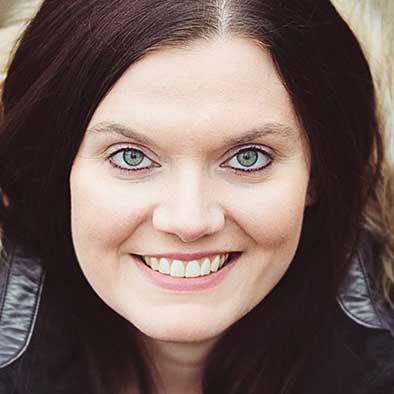
Imposter syndrome can happen to anyone at any stage in their career but seems particularly common in new leaders. It is easy to underestimate one's own abilities, especially when the stakes are high. To combat imposter syndrome, individuals must identify internal and external causes and implement strategies to shut it down at its source. From here, people can grow into the confident leaders they were hired to be!
10:00 a.m.–10:35 a.m. | Ballroom WF4 | Adult Acute Care
Permissive Hypercapnia is Beneficial
CON: Dean Hess, PhD, RRT, FAARC
PRO: Brady Scott, PhD, RRT, RRT-ACCS, AE-C, FAARC
Show description
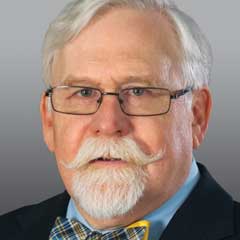
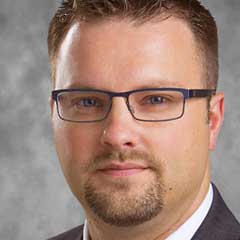
Permissive hypercapnia has long been considered benign or potentially beneficial. However, recent observational studies have raised concerns about its safety, suggesting it may be harmful. This session will delve into the debate surrounding permissive hypercapnia, examining both sides of the argument.
10:00 a.m.–10:35 a.m. | Room 224C | Leadership & Management
The Emotional Side of Feedback
Katlyn Burr, MSM-HCA, RRT, RRT-NPS, AE-C
Show description

This presentation will review the emotional response that occurs when humans give and receive feedback. Attendees will leave with practical tips to manage emotional responses when managing feedback related conversations.
10:45 a.m.–11:45 a.m. | Tangerine Ballroom | General
AARC Annual Business Meeting
Show description
This is the official 2024 AARC Annual Business Meeting. Reports from AARC leadership are presented, and 2025 AARC officers, Board of Directors, and officers for the House of Delegates are installed. The meeting concludes with an address from 2024–2025 AARC President, Dana Evans.
12:00 p.m.–12:40 p.m. | Ballroom WF3 | General
Adult Acute Care Section Meeting
Elisabeth Caldwell, MBA-HM, RRT
Show description

Section members meet to determine their needs and priorities, as well as how to use AARC resources to accomplish them. All Congress attendees, including section nonmembers, are invited to attend and participate.
12:00 p.m.–12:40 p.m. | Room 224C | General
Leadership & Management Section Meeting
Joel Brown, MSM-HCA, RRT, FAARC, FNAP, CEC
Show description

Section members meet to determine their needs and priorities, as well as how to use AARC resources to accomplish them. All Congress attendees, including section nonmembers, are invited to attend and participate.
12:00 p.m.–12:40 p.m. | Room 240B | General
Critical Care Transport Section Meeting
Jon Inkrott, RRT, RRT-ACCS
Show description
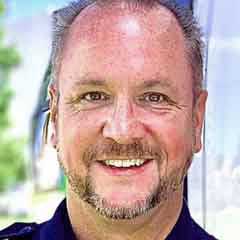
Section members meet to determine their needs and priorities, as well as how to use AARC resources to accomplish them. All Congress attendees, including section nonmembers, are invited to attend and participate.
12:00 p.m.–1:55 p.m. | Room 230A | Neonatal/Pediatrics
Open Forum #6 — Neonatal/Pediatrics Part 2
Show description
Researchers present the results of their work. Authors briefly present their findings and engage in an open discussion with the attendees.
Supported by an unrestricted educational grant from
12:00 p.m.–1:55 p.m. | Room 230C | Diagnostics
Open Forum #7 — Airway Management and PFT
Show description
Researchers present the results of their work. Authors briefly present their findings and engage in an open discussion with the attendees.
Supported by an unrestricted educational grant from
12:45 p.m.–2:05 p.m.
Symposium
Inhaled Pulmonary Vasodilators in Critical Care
12:45 p.m.–1:20 p.m. | Ballroom WF4 | Adult Acute Care
Nitric Oxide: Bactericidal and Virucidal Effects
Lorenzo Berra, MD
Show description

Inhaled nitric oxide (NO), a selective pulmonary vasodilator, is administered to newborns with hypoxemic respiratory failure and persistent pulmonary hypertension, as well as to critically ill adults with hypoxemic respiratory failure and postoperative cardiac patients. Its advantages include reducing intrapulmonary shunting, enhancing oxygenation, and alleviating right ventricle dysfunction. Furthermore, in vitro studies have demonstrated that nitric oxide possesses dose-dependent bactericidal and antiviral effects. This presentation will review the existing evidence on the efficacy of high dose inhaled NO as both an antibacterial and antiviral treatment.
1:30 p.m.–2:05 p.m. | Ballroom WF4 | Adult Acute Care
Inhaled Pulmonary Vasodilators Should be Used in ARDS
PRO: Lorenzo Berra, MD
CON: Richard Branson, MSc, RRT
Show description

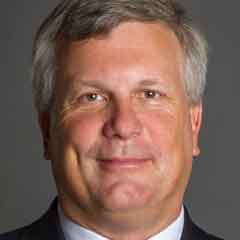
The effectiveness and role of inhaled pulmonary vasodilators in treating ARDS have sparked considerable debate. While inhaled nitric oxide (iNO) is often the first choice, inhaled prostaglandins are gaining popularity for their cost-effectiveness and efficacy. This debate will critically examine which inhaled pulmonary vasodilator, if any, offers the greatest clinical benefit for critically ill patients.
12:45 p.m.–1:20 p.m. | Room 240B | Adult Acute Care
Don’t Seal Their Fate: Resuscitate Before You Intubate!
Jon Inkrott, RRT, RRT-ACCS
Show description

The process of securing an airway, and particularly the act of intubating a patient, carries significant risks and consequences if not performed properly. Further, in air medical transport, there are marked limitations when it comes to personnel capable of safely completing this task. The peri-intubation period offers the practitioner and the patient significant challenges. If the patient is not properly pre-oxygenated, becomes hypoxic, or experiences cardiovascular collapse, the outcome can be fatal. This presentation will focus on the risks of the peri-intubation period, including volume status, shock index, and oxygenating the patient during this time to avoid what can lead to a sure sentinel event.
12:45 p.m.–2:05 p.m.
Symposium
Hospital-Based Education
12:45 p.m.–1:20 p.m. | Room 224A | Education
The Case for Robust Clinical Education
Brady Scott, PhD, RRT, RRT-ACCS, AE-C, FAARC
Show description

Ongoing clinical education is both common and inherently challenging. While the primary goal of clinical education is to ensure the continuous competence of respiratory therapist staff, the question arises: does it truly influence crucial patient outcomes? In this lecture, the speaker will critically examine the literature pertaining to the impact of ongoing clinical education on significant clinical outcomes.
1:30 p.m.–2:05 p.m. | Room 224A | Education
Student Belonging During Clinical Practice
Jamy Chulak, RRT
Show description
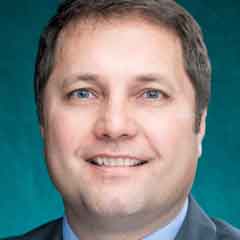
Clinical practice rotations are essential to students’ learning the art and science of respiratory therapy. Students indicate that preceptors influence their sense of belonging and learning experiences — making the “experience 100 times better” or making them feel like outsiders. Teaching hospitals and programs should evaluate the resources, education, and training available to preceptors to support clinical practice and foster belonging for those entering the profession.
12:45 p.m.–1:20 p.m. | Room 224C | Leadership & Management
The Importance of Mentoring & Sponsoring to Early and Mid-Career RTs
Ellen Becker, PhD, RRT, RPFT, AE-C, FAARC
Kim Bennion, MsHS, RRT, CHC, FAARC
Jacklyn Grimball, RRT, AE-C, FAARC
Gbolahan Harris, RRT, RRT-NPS, RRT-SDS, RPSGT
Show description




Mentors and sponsors play critical roles in helping others achieve their goals and rapidly advance their careers. In addition to fostering new skills, mentors and sponsors lend insights into unfamiliar work cultures. This panel presentation highlights the differences between these two professional development roles and addresses the importance of developing successful mentoring and sponsoring relationships early in career.
1:30 p.m.–2:05 p.m. | Room 224C | Leadership & Management
Creating A Culture of Mentorship
Kelly Massa, RRT, RRT-NPS
Show description

Initiating a culture of mentorship can be difficult without the right tools, including staff engagement and proper training. A mentoring culture can provide safety, inclusivity, and support belonging and retention. The presenter will review the tips and tricks on how to get even the most difficult to manage employee on the path to mentoring.
1:30 p.m.–2:05 p.m. | Room 240B | Transport
How to Keep Up Momentum? Skills Maintenance in Transport
Jennifer Watts, MSc, RRT, RRT-NPS, C-NPT, FAARC
Show description
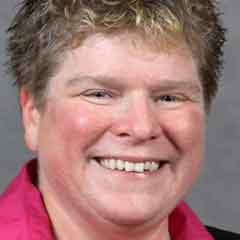
How does an RT maintain their skills for the transport environment? What steps are taken to stay up to date and progress as needed?
2:15 p.m.–3:05 p.m. | Tangerine Ballroom | Adult Acute Care
40th Phil Kittredge Memorial Lecture
Pulse Oximetry Accuracy Facts and Fallacies
Michael Lipnick, MD
Show description

Pulse oximetry is ubiquitous in all aspects of the health system. Under most conditions the accuracy of pulse oximetry is considered sufficient for clinical decision making in intensive care and for determination of home oxygen therapy in chronic lung disease. The impact of skin pigment and SpO2 accuracy has been known for decades. The COVID pandemic brought these inaccuracies to light again and garnered attention from the lay press. There are a multitude of factors which will impact oximeter accuracy, including perfusion and anemia. Testing of oximeters is under revision to address these problems.
Sponsored by
3:15 p.m.–5:20 p.m.
Symposium
Setting PEEP in Clinical Practice
3:15 p.m.–3:50 p.m. | Ballroom WF4 | Adult Acute Care
Setting PEEP in Patients Receiving ECMO
Irene Telias, MD, PhD
Show description

This lecture offers an in-depth look at whether optimizing PEEP is necessary for patients undergoing ECMO. It focuses on considerations for lung protection tailored to ECMO-specific challenges.
4:00 p.m.–4:35 p.m. | Ballroom WF4 | Adult Acute Care
Setting PEEP using Electrical Impedance Tomography (EIT)
Thomas Piraino, RRT, FCSRT, FAARC
Show description

Explore the sophisticated approach of adjusting PEEP in critical care through EIT. This session provides a deep dive into fine-tuning PEEP for tailored patient management and enhancing lung protection.
4:45 p.m.–5:20 p.m. | Ballroom WF4 | Adult Acute Care
Does PEEP Affect Diaphragm Function?
L. Felipe Damiani, PT, PhD
Show description
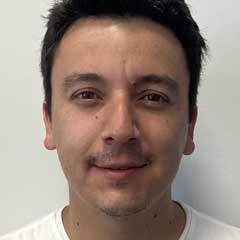
While the influence of PEEP on lung and respiratory mechanics is well-documented, its effects on respiratory muscles, particularly the diaphragm, are not as thoroughly explored. This presentation outlines recent discoveries regarding PEEP’s impact on diaphragm function and structure, emphasizing the possible mechanisms behind diaphragm muscle damage.
3:15 p.m.–5:20 p.m.
Symposium
APRT Now and in the Future
3:15 p.m.–3:50 p.m. | Room 240B | Clinical Practice
Examining the APRT in clinical practice within the VA Healthcare System
Daniel Whitt, RRT, RRT-NPS, RRT-ACCS
Show description
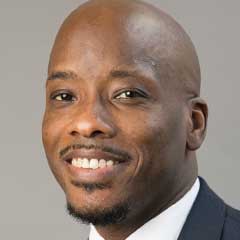
The presenter will explore the role of the Advanced Practice Respiratory Therapist in the delivery of specialty care services within the VA Maryland Healthcare Care System. This session will discuss the scope of practice, practice patterns, and lessons learned in year one of clinical practice.
4:00 p.m.–4:35 p.m. | Room 240B | Clinical Practice
A Day in the Life of an APRT
Mindy Conklin, RRT, RRT-ACCS
Show description

This lecture will provide insight into the practice of the first APRT within the VA Healthcare system. Participants will gain better insight into the expectations associated with this new advanced practice provider role.
4:45 p.m.–5:20 p.m. | Room 240B | Clinical Practice
APRT Now and How do we Grow the Role Nationally
David Vines, PhD, MHS, RRT, FAARC, FCCP
Show description
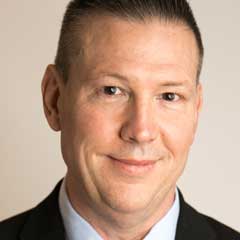
This lecture will provide insight into the efforts of AARC, NBRC, and CoARC to establish the Advance Practice Respiratory Therapist as an advanced practice provider. The lecture will also discuss plans and actions needed to expand this role nationally and how everyone can be involved.
3:15 p.m.–3:50 p.m. | Room 224C | Leadership & Management
Breathing Life into Solutions: Alleviating RT Shortages
Jerin Juby, DMgt, RRT
Show description

This presentation will highlight the critical shortage of RTs in healthcare and explore how we can contribute to a remedy. Discover the impact of the shortage, understand the rewarding nature of respiratory therapy careers, and learn actionable steps to support and strengthen the respiratory care workforce. Be part of the solution and help breathe life into a healthier future.
3:15 p.m.–3:50 p.m. | Ballroom WF3 | Neonatal/Pediatrics
From Tracheostomy to Home
Erin Nilson-Italia, BS, RRT, RRT-NPS
Denise Willis, MSc, RRT, RRT-NPS, AE-C, FAARC
Michael O’Brien, MSc, RRT, RRT-ACCS, RRT-NPS, RRT-SDS, RPFT, AE-C
Amanda Nickel, MSc, RRT, RRT-NPS, RRT-ACCS — Moderator
Show description




The incidence of pediatric tracheostomy continues to increase. Many hospitals have created guidance beginning at initial pre-operative conversation continuing through to post-operative care, caregiver training, and discharge home. This panel will discuss the essential elements of a comprehensive pediatric tracheostomy program.
3:15 p.m.–5:10 p.m. | Room 230A | Clinical Practice
Open Forum Poster Walk Round #2
Show description
Researchers present the results of their work. Authors briefly present their findings and engage in an open discussion with the attendees.
Supported by an unrestricted educational grant from
3:15 p.m.–5:10 p.m. | Room 230C | Clinical Practice
Open Forum Poster Walk Round #3
Show description
Researchers present the results of their work. Authors briefly present their findings and engage in an open discussion with the attendees.
Supported by an unrestricted educational grant from
4:00 p.m.–5:20 p.m.
Symposium
Innovations in Teaching
3:15 p.m.–3:50 p.m. | Room 224A | Education
Begin at the End — Backward Design in RT Education
Sarah Varekojis, PhD, RRT, RRT-ACCS, FNAP, FAARC
Show description
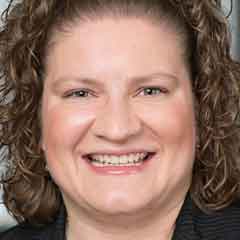
Whether you are a teacher in a classroom, at the bedside, or of other healthcare providers, it can be challenging to create effective education. Backward design is an evidence-based approach which prioritizes achieving goals important to both you and the learner while focusing on learning outcomes. Participants will work through the first few steps of the backward design process to align outcomes, assessments and teaching strategies to improve education effectiveness.
4:00 p.m.–4:35 p.m. | Room 224A | Education
A Baby without Bathwater? Should We Toss Out Traditional Assessment Methods
CON: Camille Stover, MET, RRT, RRT-NPS
PRO: Megan Koster, EdD, RRT, RRT-NPS
Show description


Alternative grading frameworks are becoming more prevalent across many institutions, specifically those with a focus on health sciences education. Are these frameworks the answer to help students overcome academic anxiety to achieve success in respiratory care programs? Or, are they just another fad? Join these speakers in discussing the pros and cons of utilizing alternative grading practices in respiratory care education.
4:45 p.m.–5:20 p.m. | Room 224A | Education
Assessment of Essential Professional Competencies
Tom Jones, EdD, RRT, CPFT
Show description

Competency-based outcomes for most health professions’ education programs require evaluations of student progress in achieving competence of a variety of professional attributes, including communication, interprofessional practice, critical thinking, and professional behavior. Despite this, no standardized way to measure competence has been established. This presentation highlights student perceptions of the effectiveness of a formalized faculty-student mentoring program. and how to use the student portfolio as an evaluation model related to the development of essential professional competencies.
4:00 p.m.–4:35 p.m. | Room 224C | Leadership & Management
Building Productivity into your Staffing Model
Tom Cahill, MS, RRT, RRT-NPS, FAARC, FACHE
Show description

The AARCs Safe and Effective Staffing Guide (SESG) is the gold standard in strategic scientific staff management for the profession of respiratory care. This lecture will demonstrate how to engage administration and information technology systems to utilize the (SESG) time standards into daily operations within a respiratory care department.
4:00 p.m.–4:35 p.m. | Ballroom WF3 | Neonatal/Pediatrics
Congenital Cardiac Defects from an RT Perspective
James Keith, BS, RRT, RRT-NPS, RRT-ACCS, AE-C
Show description
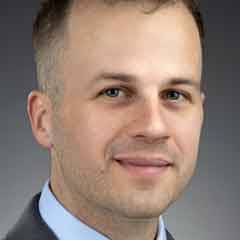
Respiratory therapists commonly encounter congenital heart defects in the pediatric cardiac critical care setting. Management of these patients is dependent on the anomaly and relevant surgical interventions. Respiratory management strategies and special considerations will be discussed through the lens of a pediatric respiratory therapist.
4:45 p.m.–5:20 p.m. | Room 224C | Leadership & Management
Leveraging AI for New Managers in the Respiratory Field
Jason Moury, MPH, RRT
Show description
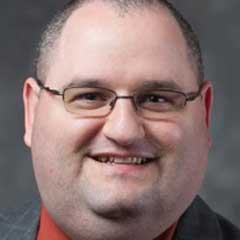
The presenter will focus on the pivotal role of artificial intelligence (AI) in revolutionizing respiratory care management. The session focuses on emphasizing the critical need for new managers in the respiratory field to embrace technological advancements, particularly AI, for improved patient outcomes and efficient healthcare delivery.
4:45 p.m.–5:20 p.m. | Ballroom WF3 | Neonatal/Pediatrics
iNO Beyond PPHN: Data vs. Anecdote?
Ira Cheifetz, MD, FAARC
Show description
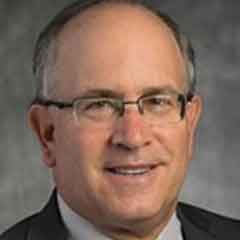
While evidence clearly supports the role of iNO for PPHN, definitive data are lacking for other pediatric populations. The administration of iNO for pediatric acute respiratory distress syndrome, right ventricular failure, and post-transplantation management is largely based on experience, anecdote, and limited conflicting evidence. This presentation will review the medical literature for use of iNO beyond persistent pulmonary hypertension in the newborn. Potential clinical management algorithms will be explored.
5:00 p.m.–6:30 p.m. | Rosen Centre Grand Ballroom C | General
International Council for Respiratory Care Reception
There are no sessions that match your display preferences.

